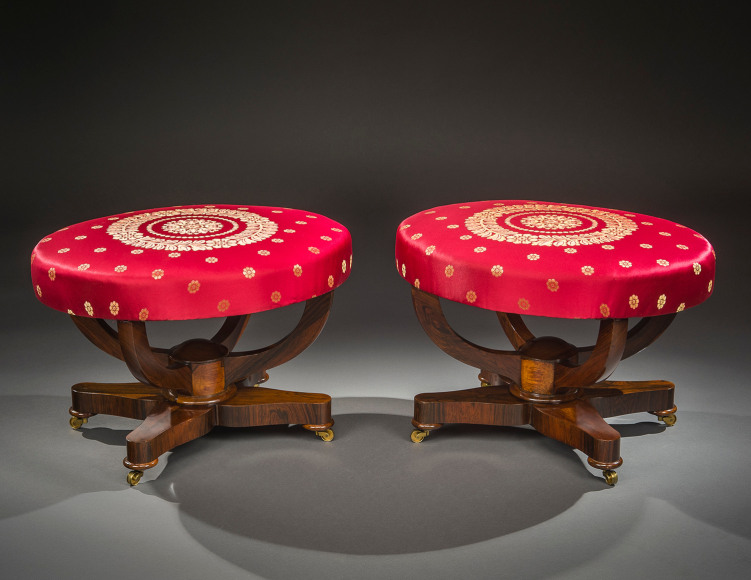Pair Oval Double Curule Benches, about 1835
New York
Rosewood (secondary woods: ash and poplar), with gilt-brass castors
Each, 16 3/8 in. high, 23 3/4 in. long, 19 in. deep
Although the name “Duncan Phyfe” is typically associated with the tasteful reeded furniture that his workshop produced in the early years of the 19th century, his shop is also known to have worked in a wide range of styles, from the more purely classical and delicate lines of Sheraton-inspired designs to the heavier adaptations of French Restauration and English Regency forms.
This unusual pair of double curule stools can be attributed to Phyfe based upon the similarity of style, quality, and construction to the suite of furniture commissioned by Samuel A. Foot in 1837 for his New York residence at 678 Broadway, which is now housed in the Greek Revival Parlor in The American Wing at The Metropolitan Museum of Art (see 19th Century America: Furniture and Other Decorative Arts, exhib. cat. [New York: The Metropolitan Museum of Art, 1970], p. 79 illus.
The stools are nearly identical to a pair of round stools, also in the collection of The American Wing at The Metropolitan Museum of Art, that were part of the furnishing of Plum Point, New Windsor, near Newburgh, New York, which was built about 1838 by Philip Alexander Verplanck.
Like much American Neo-Classical furniture, the design of these stools was probably based on patterns published in Pierre de La Mésangère’s Collection des Meubles et Objets de Goût, which was published serially between 1796 and 1830. They are distinguished by their strong architectural lines and the rich color and grain of their rosewood veneers.

